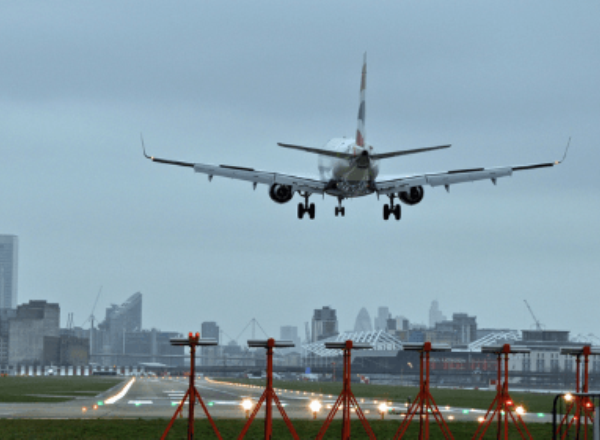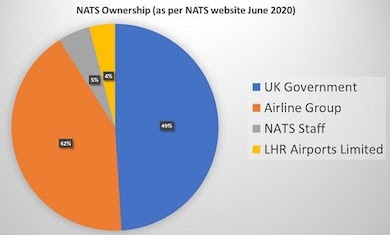Background
Developments such as terminals, hangars, hotels and car parks can adversely affect airport operations. Airport operations can also adversely affect developments. The main issues to look out for are listed below.
Scope
This checklist applies to on-airport and off-airport developments close to the airport.
Figure 1: Infographic indicating Pager Power services for Airport Developments.
Checklist
- Will the development breach Obstacle Limitation Surfaces (OLS)? – Does the height of the development mean it is an obstacle risk to aircraft? The height of developments near airports is managed with obstacle limitation surfaces. OLS height restrictions are determined by imaginary surfaces projected from the runway ends and around the airport. Height restrictions are more limiting close to the airport than further away. https://www.pagerpower.com/news/obstacle-limitation-surfaces-series-overview-guidance/
- Will the development adversely affect Instrument Flight Procedures (IFPs)? – Instrument Flight Procedures are standard procedures that pilots use when departing from or arriving at the airport. Instrument Flight Procedures have additional protection requirements. Usually IFPs are not affected if developments do not breach an Airport’s Obstacle Limitation Surfaces. https://www.pagerpower.com/news/exploring-instrument-flight-procedures-ifps/
- Will the development lie in a Public Safety Zone (PSZ)? – Public Safety Zones are zones where aircraft present a collision risk to people on the ground. They occupy a narrow zone beneath the runway approach at larger airports. Development, such as housing, which lead to increasing numbers of people in the PSZ are restricted under UK planning law. https://www.pagerpower.com/news/controlling-risk-death-airport-public-safety-zones/
- Will the development adversely affect radar? Radar detect aircraft and display them to air traffic controllers using radio signals. Physical structures can block and reflect these radio signals reducing the performance of the radar. Radar Impact Assessments show the likely impact of a proposed development on an airport’s radar system. Pager Power can assess radar impact and advise on mitigation. https://www.pagerpower.com/buildings/buildings-radar-impact-assessment/
- Will the development adversely affect radio navigation aids? Pilots use radio navigation beacons to guide them towards an airport. These include Instrument Landing Systems (ILS), Distance Measuring Equipment (DME) and VHF Omni Range (VOR) beacons. Physical structures can affect associated radio signals and consequently have an adverse impact on aviation. https://www.pagerpower.com/news/planning-issues-for-buildings-navigation-aids/
- Will the development adversely affect aeronautical radio communications? Pilots and air traffic controllers communicate using air to ground radio systems. Developments can affect radio signals which could adversely affect performance of these systems. Pager Power can advise on technical and operational impacts. https://www.pagerpower.com/news/impact-wind-turbines-aeronautical-radio-systems/
- Does the development require aeronautical lighting? Some developments require aeronautical lights to be fitted so that pilots can see them at night. Lighting requirements vary from country to country and depend on the development’s size and location. An aeronautical lighting assessment can show if lighting is needed – as well as recommending how a development should be lit. https://www.pagerpower.com/news/planning-issues-for-buildings-aviation-lighting/
- Will light emitted from the development adversely affect aviation? Pilots can be sensitive to bright light – particularly when landing at night. Developments with bright lights or directional lights directed towards incoming aircraft can be problematic.
- Will solar reflections from the development adversely affect aviation? Glass, Solar Panels, Vehicle windscreens and polished surfaces can all cause strong direct solar reflections towards pilots or air traffic controllers. https://www.pagerpower.com/news/solar-reflections-building-development-overview/ A Glint and Glare assessment https://www.pagerpower.com/solar/glint-glare-assessments/#aviation may be required to show whether reflection levels will be acceptable.
- Will the development cause unacceptable turbulence? Tall buildings, paved surfaces and forestry can all cause an increase in air turbulence which could have an adverse impact on approaching aircraft in unusual circumstances.
- Will wake caused by aircraft damage the development? Aircraft wings cause wake tip vortices as they pass through the air. In certain conditions these vortices can dislodge roof tiles. Whilst the effect is somewhat unpredictable the effect is most pronounced near or beneath runway approaches. https://www.pagerpower.com/news/its-woke-for-wind-farm-developers-to-think-about-wake/
- Will Jetblast and Propwash adversely affect the development? Aircraft jets and propellers blast air backwards in order to propel themselves forward. These are powerful when aircraft take-off and can also be strong when aircraft turn when taxiing. Developments with large flat surfaces (such as solar PV panels) can be particularly susceptible. https://www.pagerpower.com/news/dont-get-blown-away-jet-blast-and-wake-turbulence/
- Will the development encourage birds? Birds can be dangerous causing broken aircraft windscreens or engine damage. Risk is very species dependent as some birds avoid aircraft whilst others do not. Trees, food waste and open water can all encourage birds. Developments that do not encourage birds may be preferable.
- Are hot gases from chimneys a concern? Chimneys can emit hot gases which could cause turbulence. This can occasionally be raised as a concern by airports.
- Have you considered the impact of cranes during construction and decommissioning? The cranes used to build a development are usually taller than the development itself. It is often necessary to implement a Crane Management Scheme to ensure cranes do not adversely affect airport operations. https://www.pagerpower.com/news/crane-operations-schemes/
- Other Issues. There are more potential issues such as type A surfaces https://www.pagerpower.com/news/obstacles-near-airports-type-a-surfaces/ , model aircraft, unmanned aerial vehicles https://www.pagerpower.com/news/uav-risk-assessment-appraising-risks-small-uavs-airport-operations/ , kites and neighbouring aerodromes. These are quite rare however.
How Can Pager Power Help
Pager Power helps developers assess and resolve most of these issues. In some cases, particularly birds, we are likely to engage or recommend other specialists. To find out more please take a look at our video or get in touch on 01787 319001.




